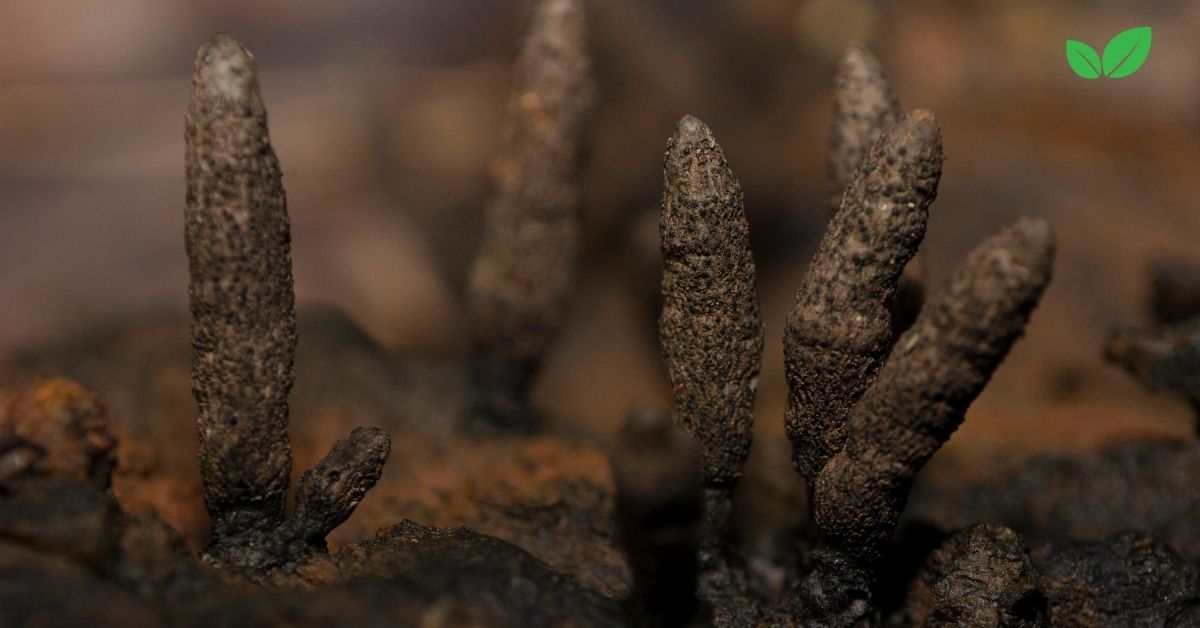Xylaria polymorpha, commonly known as Dead Man’s Fingers, is a unique and intriguing species of fungus that has captivated the interest of mycologists and nature enthusiasts alike. Its eerie, finger-like fruiting bodies emerge from decaying wood, earning it a macabre name. Beyond its spooky appearance, Xylaria polymorpha plays a vital role in forest ecosystems, contributing to the decomposition process and nutrient cycling. This article delves into the fascinating world of Xylaria polymorpha, exploring its biology, ecological significance, and role in maintaining forest health.
Characteristics of Dead Man’s Fingers
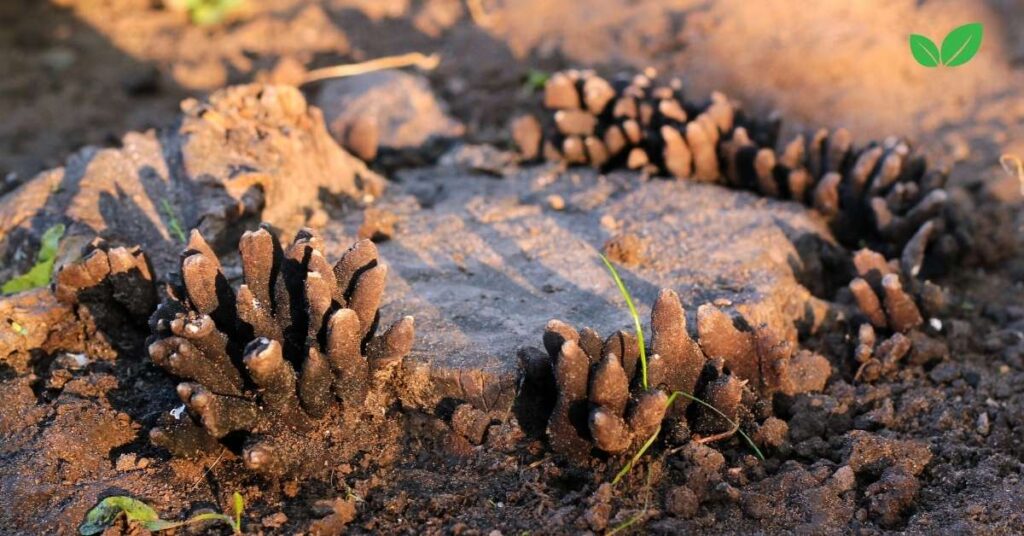
Morphological Features
Dead Man’s Fingers is a saprophytic fungus, meaning it derives its nutrients from decaying organic matter, particularly dead wood. Its fruiting bodies are known for their distinctive shape and appearance, which resembles blackened fingers emerging from the earth or rotting wood. Key morphological features include:
- Fruiting Bodies: The fruiting bodies of Xylaria polymorpha are elongated, cylindrical, and typically grow in clusters. They are black on the outside, with a rough, cracked texture that contributes to their resemblance to decomposing digits. The inner tissue is white and fibrous, contrasting sharply with the dark exterior.
- Size: The fruiting bodies can range from 3 to 10 centimeters in length and about 1 to 2 centimeters in diameter. They start as smaller, club-shaped structures before maturing into their more recognizable elongated form.
- Spores: Xylaria polymorpha produces dark, microscopic spores that are released into the environment through small openings in the fruiting bodies. These spores play a crucial role in the dispersal and reproduction of the fungus, allowing it to colonize new substrates.
Life Cycle
The life cycle of Dead Man’s Fingers involves the production of spores, colonization of woody substrates, and the gradual breakdown of organic material. It follows a typical fungal life cycle with the following stages:
- Spore Dispersal: Mature fruiting bodies release spores into the surrounding environment. These spores are carried by wind or water to new locations, where they can germinate under suitable conditions.
- Germination and Mycelium Growth: Upon landing on a suitable substrate, such as a fallen log or decomposing wood, the spores germinate and form a network of mycelium. The mycelium is a thread-like structure that penetrates the wood, breaking down complex organic compounds.
- Decomposition: As the mycelium grows, it releases enzymes that decompose lignin and cellulose in the wood. This process not only provides the fungus with essential nutrients but also contributes to the breakdown of woody material, making nutrients available to other organisms in the ecosystem.
- Fruiting Body Formation: After a period of mycelial growth, the fungus produces its characteristic fruiting bodies, which emerge from the wood’s surface. These structures produce spores, completing the cycle.
Ecological Significance of Dead Man’s Fingers
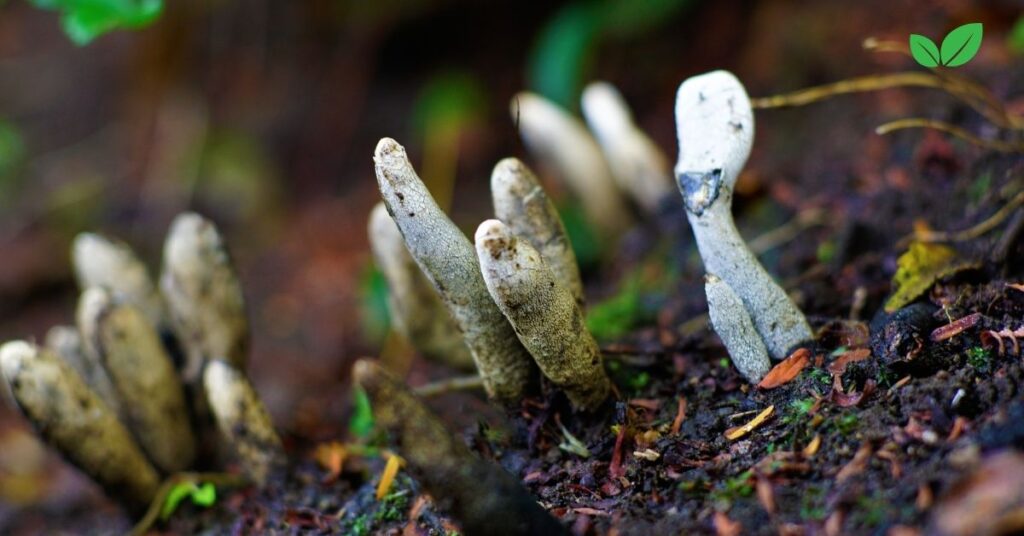
Role in Decomposition
One of the most critical ecological functions of Dead Man’s Fingers is its role in the decomposition of dead wood. As a saprophyte, it breaks down lignin and cellulose, the complex molecules that give wood its rigidity. This decomposition process is vital for nutrient cycling in forest ecosystems, as it releases essential elements such as carbon, nitrogen, and phosphorus back into the soil.
- Nutrient Cycling: By breaking down organic matter, Xylaria polymorpha helps recycle nutrients that would otherwise remain locked in decaying wood. These nutrients become available to other plants and microorganisms, supporting the overall health and productivity of the ecosystem.
- Carbon Sequestration and Release: While decomposition releases carbon dioxide into the atmosphere, the process is also essential for the long-term storage of carbon in forest soils. The balance between carbon sequestration and release is crucial for maintaining the carbon cycle, making decomposer fungi like Dead Man’s Fingers integral to climate regulation.
Habitat for Microorganisms
The presence of Dead Man’s Fingers on decaying logs creates microhabitats for a variety of organisms, including insects, other fungi, and microorganisms. The fruiting bodies and mycelium provide shelter and food sources, contributing to the biodiversity of the forest floor.
- Insect Interaction: The decomposing wood inhabited by Xylaria polymorpha often attracts beetles, ants, and other wood-dwelling insects. These insects aid in further breaking down the wood and facilitate the spread of fungal spores through their movements.
- Symbiotic Relationships: While primarily saprophytic, Dead Man’s Fingers may also engage in interactions with other fungi and bacteria that cohabit with decaying wood. These relationships can range from competitive to mutualistic, as different species contribute to the decomposition process in complementary ways.
Xylaria Polymorpha’s Role in Forest Health
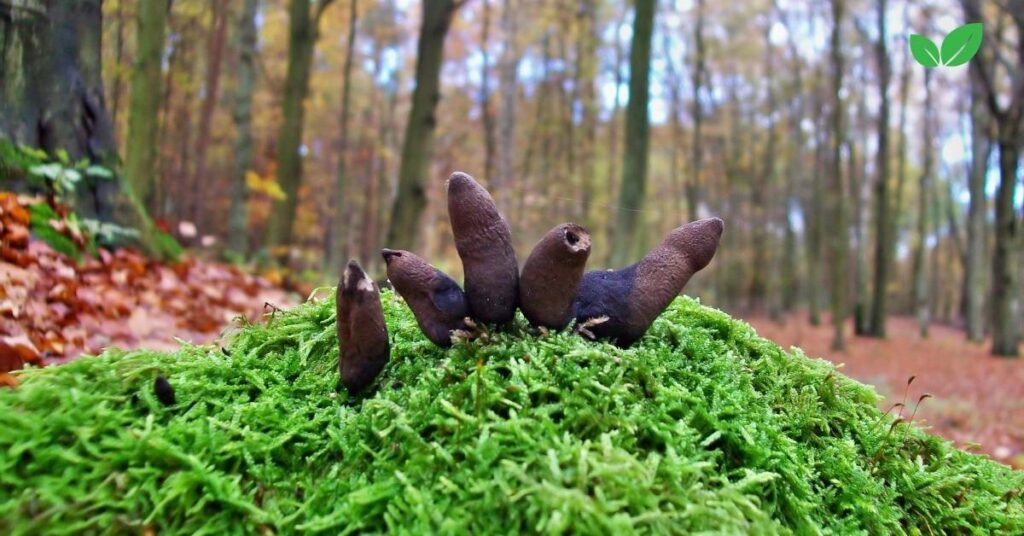
Contribution to Soil Structure
The decomposition activities of Dead Man’s Fingers help improve soil structure by breaking down woody debris into smaller particles that contribute to humus formation. Humus is a vital component of healthy soils, providing nutrients, improving water retention, and fostering microbial activity.
- Soil Fertility: The breakdown of wood by Xylaria polymorpha enriches the soil with organic matter, which is essential for plant growth. As the fungus decomposes wood, it releases compounds that enhance soil fertility, supporting the growth of trees and understory plants.
- Soil Stabilization: The presence of organic matter in the soil contributes to its structure and stability, reducing erosion and helping to maintain the integrity of the forest floor. By decomposing wood, Dead Man’s Fingers indirectly aids in soil stabilization.
Enhancing Forest Regeneration
Dead wood in forests serves as a substrate for fungal growth, but it also plays a crucial role in the regeneration of forests. Xylaria polymorpha contributes to this process by breaking down fallen logs, allowing new seedlings to establish themselves.
- Seedling Establishment: The decomposition of logs by Xylaria polymorpha creates openings in the forest floor where seeds can germinate. As the wood decays, it forms a nutrient-rich substrate that provides young plants with the conditions they need to thrive.
- Reducing Competition: By breaking down large pieces of dead wood, Xylaria polymorpha helps clear space in dense forests, reducing competition for light and nutrients. This process enables a greater diversity of plant species to coexist and contributes to the dynamic balance of forest ecosystems.
Dead Man’s Fingers in Human Culture and Folklore
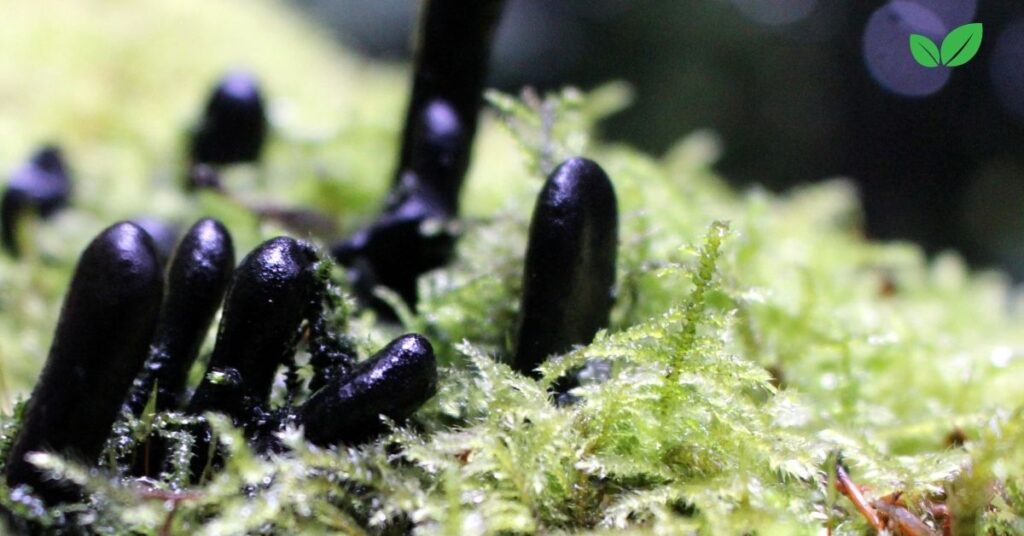
Aesthetics and Curiosity
The appearance of Xylaria polymorpha has made it a subject of fascination and curiosity. Its fruiting bodies, often described as resembling decomposing fingers, evoke a sense of mystery and the macabre. This has led to its common name, “Dead Man’s Fingers,” and its association with haunted forests and spooky landscapes.
- Natural Artistry: Nature photographers and mycologists often seek out Dead Man’s Fingers for its unique form and photogenic qualities. The contrast between its dark, gnarled fruiting bodies and the vibrant greenery of the forest floor creates striking images that capture the beauty of decay.
- Cultural References: In various cultures, fungi like Xylaria polymorpha have been associated with death, decay, and the afterlife. While these associations are primarily based on appearance, they highlight the deep connection between natural phenomena and human imagination.
Medicinal and Scientific Interest
While Dead Man’s Fingers is not commonly used in traditional medicine, research into its biochemical properties has revealed the presence of bioactive compounds that may have medicinal potential.
- Antimicrobial Properties: Some studies have indicated that extracts from Dead Man’s Fingers may have antimicrobial properties, which could be useful in developing natural antifungal or antibacterial agents.
- Biodegradation Research: The ability of Xylaria polymorpha to break down complex organic compounds has made it a subject of interest in the field of bioremediation. Understanding how this fungus decomposes lignin and cellulose could have applications in managing organic waste and improving composting techniques.
Environmental Challenges and Conservation of Decomposer Fungi
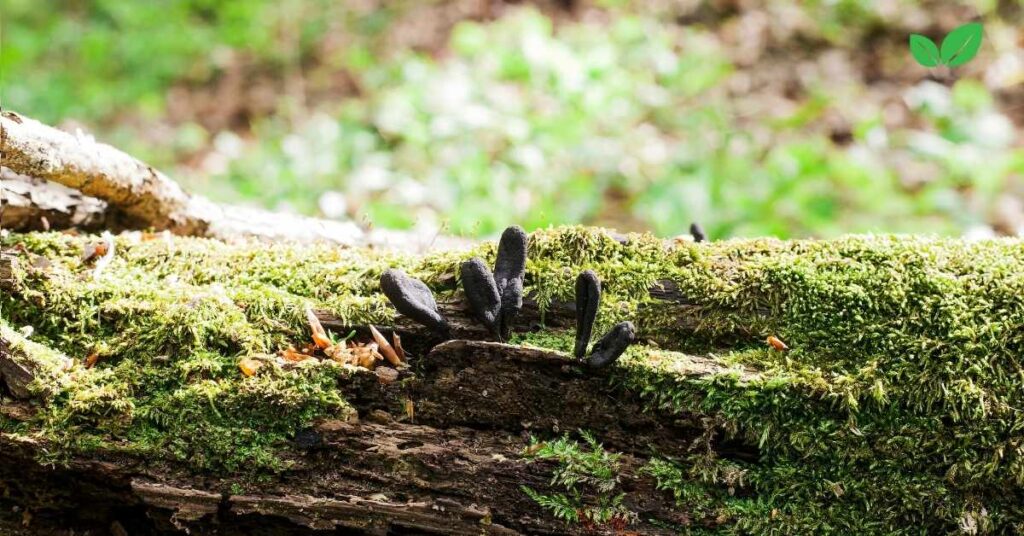
Impact of Deforestation
The survival of Dead Man’s Fingers is closely tied to the availability of dead wood, which serves as its primary substrate. Deforestation and habitat loss threaten the natural cycles that allow decomposer fungi to thrive.
- Loss of Dead Wood Habitat: As forests are cleared or managed for timber production, the amount of dead wood left in the environment decreases. This reduction in available habitat can lead to a decline in decomposer fungi like Xylaria polymorpha, disrupting nutrient cycling in forest ecosystems.
- Forest Management Practices: Sustainable forest management practices that retain dead wood on the forest floor can help support the populations of fungi like Xylaria polymorpha. Leaving logs and branches to decompose naturally is essential for maintaining healthy forest ecosystems.
Climate Change and Fungal Communities
Climate change poses a significant threat to fungal communities, including Xylaria polymorpha. Changes in temperature, precipitation, and forest dynamics can alter the conditions required for fungal growth and decomposition.
- Temperature Sensitivity: Fungi are highly sensitive to changes in temperature and moisture levels. As climate change alters the conditions of forests, it can affect the growth cycles and reproductive success of Xylaria polymorpha.
- Shifts in Decomposition Rates: Warmer temperatures can accelerate decomposition processes, potentially altering the balance of carbon cycling in forests. This can have cascading effects on soil fertility, plant growth, and overall ecosystem function.
Promoting Awareness of Decomposer Fungi
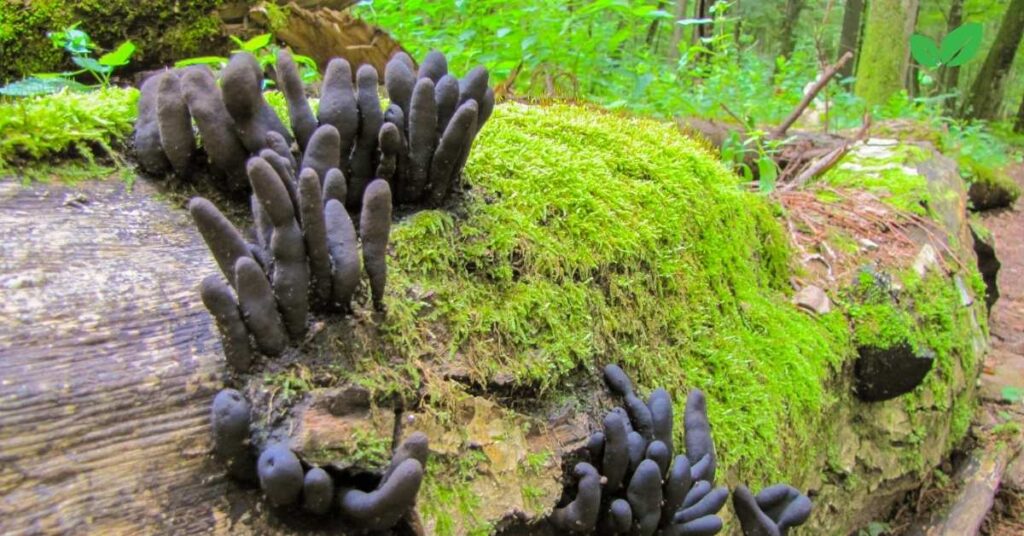
Education and Outreach
Raising awareness about the ecological importance of fungi like Xylaria polymorpha is crucial for fostering a deeper appreciation of forest ecosystems. Educating the public about the role of decomposer fungi can help support conservation efforts.
- Nature Walks and Fungi Identification: Guided nature walks and workshops focused on fungi identification can help people understand the diversity and ecological roles of fungi in their local forests. Xylaria polymorpha serves as an excellent example of the intriguing forms fungi can take and their role in decomposition.
- Citizen Science Projects: Involving citizens in fungal surveys and data collection can help gather valuable information about the distribution and health of fungal species like Xylaria polymorpha. These projects can also foster a sense of connection between communities and their natural surroundings.
Conservation Efforts for Fungal Diversity
Conservation initiatives often focus on larger, more charismatic organisms like mammals and birds, but fungi play an equally critical role in ecosystem health. Efforts to protect fungal habitats and promote sustainable forest management are essential for preserving species like Xylaria polymorpha.
- Protecting Old-Growth Forests: Old-growth forests, with their abundance of decaying wood, are prime habitats for decomposer fungi. Protecting these areas ensures that species like Dead Man’s Fingers can continue to thrive and perform their ecological roles.
- Incorporating Fungi into Conservation Policies: Conservation policies should recognize the importance of fungi and their role in nutrient cycling, soil formation, and ecosystem balance. Integrating fungi into forest management plans can help maintain the ecological integrity of natural areas.
Conclusion: The Ecological Importance of Xylaria Polymorpha
Xylaria polymorpha, or Dead Man’s Fingers, is much more than a curious-looking fungus on the forest floor. It is a vital component of forest ecosystems, playing a crucial role in decomposition, nutrient cycling, and soil health. Its presence in forests contributes to the balance and sustainability of these ecosystems, making it an unsung hero in the natural world.
As climate change and deforestation threaten the delicate balance of ecosystems, understanding and appreciating the role of decomposer fungi like Xylaria polymorpha becomes increasingly important. By promoting awareness and implementing sustainable practices, we can ensure that these fungi continue to thrive, supporting the resilience and health of forests for generations to come.
Through their mysterious appearance and vital ecological functions, Dead Man’s Fingers and other decomposer fungi remind us of the intricate connections within nature. Their ability to transform death into life—by turning decaying wood into fertile soil—underscores the importance of every organism in maintaining the web of life. Recognizing the value of such species is a step toward a more sustainable future, where the cycles of life and decay are allowed to continue in harmony.
Read More: The Environmental Niche of White Mushrooms South Carolina

